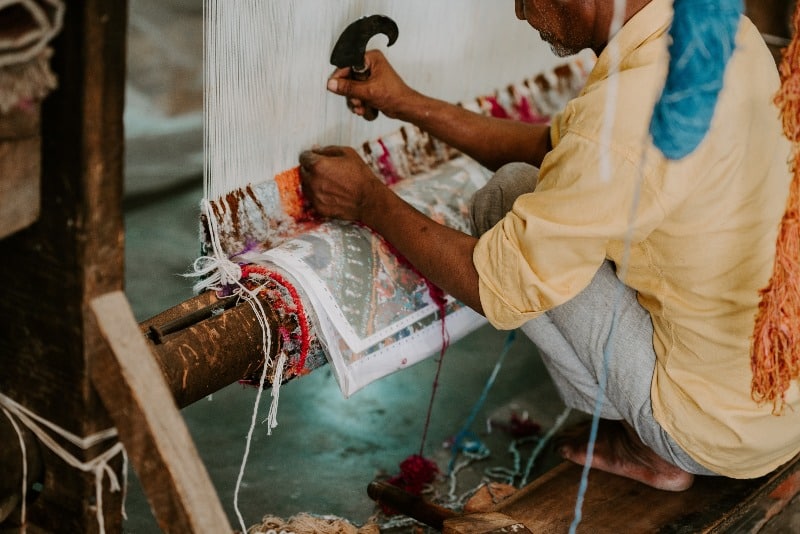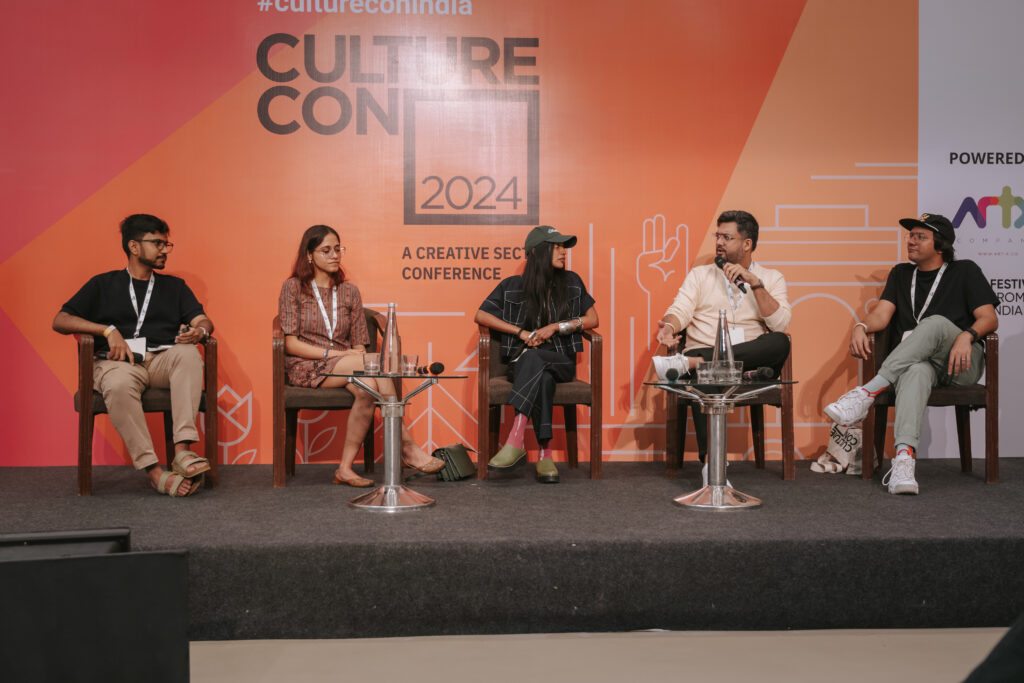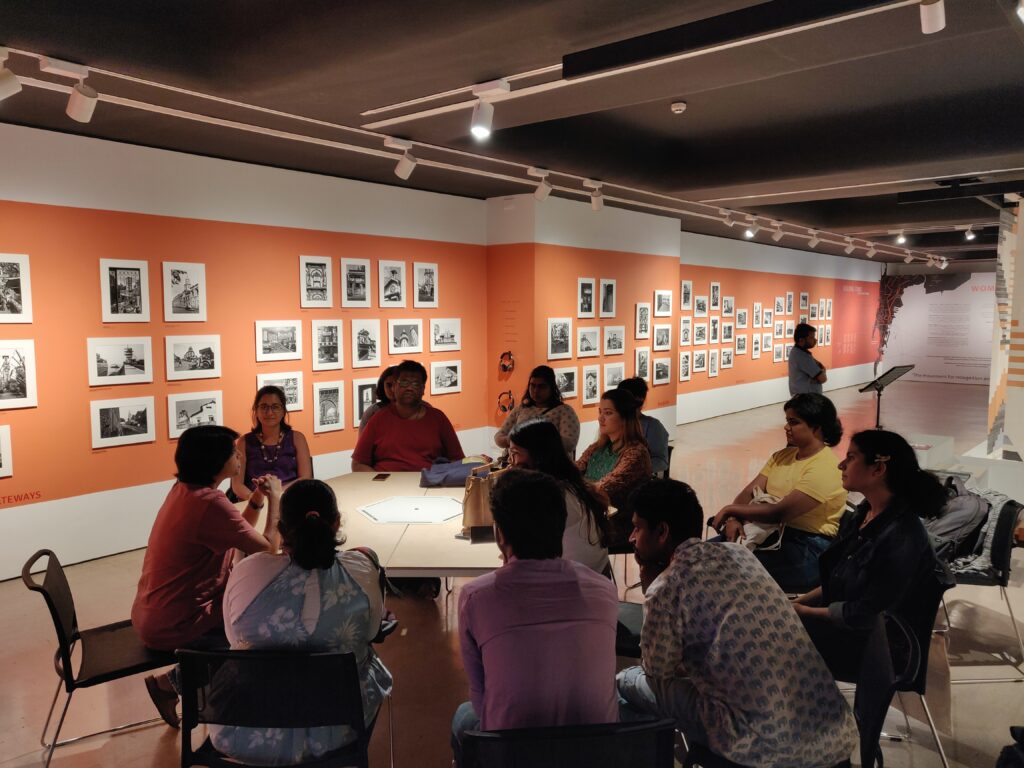On 27 July and 3 August 2020, India’s Ministry of Textiles took a decision to abolish the All India Handloom and Handicrafts Boards, along with the powerloom, wool, jute and silk boards. The boards included officials from the central and state governments, representatives of the industry and craftspeople themselves, and was widely perceived to be “one official forum, however watered down, where the voices and views of weavers and craftspeople could be expressed directly”. Our sister newsletter, Culture Wire, originally published this article in September 2020 asking experts about the consequences of such a culture policy decision.
On August 7, National Handloom Day, Union Cabinet Minister for Textiles and Women & Child Development, Smriti Irani, in a tweet urged people to “commemorate India’s rich & diverse handloom and acknowledge contribution of weavers in conserving our heritage… (and)… root for #Vocal4Handmade”. Ironically, on July 27 and August 3, two resolutions passed by the Ministry of Textiles that Irani heads, scrapped the All India Handicrafts and Handloom Boards. Shortly after, the All India Handicrafts Board and the All India Powerloom Board were also dissolved. The boards included officials from the central and state governments, representatives of the industry and craftspeople themselves, and was widely perceived to be “one official forum, however watered down, where the voices and views of weavers and craftspeople could be expressed directly”. The Ministry’s justification cited the Centre’s “vision of minimum government and maximum governance”. A month in, reports of closures of state handloom cooperatives have started trickling in.
While the decision found support from some quarters for its practicality, many NGOs and activists are opposed to it. Introducing a move like this for a sector — which incidentally is also regarded as India’s second largest employer — that’s already reeling under an economic crisis during the pandemic has invited strong criticism from industry stalwarts. For instance, Laila Tyabji, founder of Dastkar, told The Hindu,“However pragmatic a gesture, telling a sector in distress to be aatma nirbhar, while simultaneously abolishing their only forum to articulate problems and suggest solutions, is actually sending a negative message.” Sabita Radhakrishna, an active member of the Crafts Council of India (CCI), concurs and thinks the government should not have scrapped the Boards; organisations like CCI need the support. “Any NGO working for the betterment of craft will need governmental support, which is why it was instituted in the first place,” she says.
Another vocal critic has been Dr D. Narasimha Reddy, a long-term public policy reviewer and campaigner, who strongly suggests a restitution of the boards. Culture Wire spoke to him to understand why such boards were a vital link in the ecosystem of handloom production and economic growth.
Urmi Chanda (UC): You’ve expressed your disappointment at the scrapping of the All India Handloom Board (AIHB) in July, since it was the sole point of direct contact between weavers and the government. Could you explain to our readers how it benefited, say, a young weaver in a small town in India?
Dr D. Narasimha Reddy (DNR): It was a policy-making and watchdog body. It was also a platform to raise concerns of handloom weavers before the government. Direct benefit was never envisaged, because it was not an individual grievance mechanism. However, because handloom livelihoods are not understood easily, especially by the bureaucrats sitting far away from production areas, this was an opportunity for direct interaction between officials and representatives of handloom weavers. Unlike other production sectors, where industrialists with suits and suitcases can walk in to discuss their issues, the average handloom weaver cannot have such access. AIHB provided that space.
UC: What, according to you, will be the gravest ramifications of this scrapping, along with that of the National Handicrafts and the Powerloom Boards?
DNR: In general, these are spaces for discussion, sharing, and learning directly. Closing them would mean the government has cut off the important link for planning and growth affecting millions of livelihoods. It has set these sectors adrift, without proper assessment. With decreasing budgets over years, handicrafts and handloom sectors have been suffering monumental neglect. This abolition was the final straw.
UC: Experts such as Ms. Jaya Jaitly have supported this move. The contention is that with politicians rather than sector specialists heading these bodies, they had become ineffective. What kind of modifications to the Board would you have recommended instead of an abolition?
DNR: Yes, they have been made ineffective by the elected and unelected officials. But so is the case with even statutory, autonomous bodies such as Electricity Regulatory Commissions and even the Election Commission. Parliament has also been ineffective, in many ways. That does not mean we have to abolish them. In a democratic setup, we have to strive to improve rather than abolish such participatory bodies. Abolishing them is not the solution to a problem that is essentially caused by bureaucrats and political bosses. Making them effective is possible with a demonstrated will to provide clean governance. AIHB should have more frequent meetings. Instead of omnibus representation, expertise based appointments can be done. Membership can be rotated. If not State-level, regional-level sub-platforms can be established. AIHB can be linked with NITI Aayog and other planning bodies. However, it is not just planning or policy-making. Scheme formulation and implementation monitoring should be part of the agenda. AIHB can also report directly to Parliament and legislatures.
UC: The pandemic has proved to be a particularly difficult time for artisans and craftsmen in India. Would you say that this move by the government at this time would in any way make the situation harder?
DNR: Yes. Government has shut out the means to understand the problems being faced by handloom weavers, artisans, and craftspersons. Just like ignorance of the huge number of migrant labour, during lockdown, the government is shedding its essentials. In the pandemic situation, production can happen only in the homes of handloom weavers, with perfect adherence to social distancing and isolation, just as farmers did. In rural India, traditional livelihoods are going to be the mainstay of a pandemic-hit Indian economy, surrounded by the collapse of export-dependent global supply chains.
UC: How is the Weavers’ Service Center (WSC), that was instituted by the current Textile Ministry similar or different in its function to the Handloom Board?
DNR: WSCs are starved of funds and human resources. Long back, a Parliamentary Committee suggested review and strengthening of these bodies. Instead, governments have reposed their faith and funds in these National Institutes of Fashion Technology (NIFT). It is akin to ignoring Bharat, in favour of India. NIFT is a parasitic body that lives off the handloom sector, and does not give anything back. An average handloom weaver cannot step into NIFT campuses, without overcoming the obstacle of a security guard at the gate, while NIFT personnel walk into handloom weaver households at will and walk away with artistic treasures.
UC: What kind of role might the WSC play now? Do you think it might replace the board’s functions? And if not, what kind of body/structure needs to be formed to replace the Board or form a better substitute?
DNR: WSCs are technical bodies meant to build the capacities of the handloom sector. These WSCs cannot replace a policy-making body i.e., AIHB. As a student of public administration, I have been studying many institutions. There is no better way but to re-establish the AIHB, and follow some good participatory governance practices. In fact, to avoid such abrupt and arbitrary abolition, the government should back it with legislation. AIHB should be re-established through an Act passed in Parliament, making it a statutory body.
Fast Facts by Priya Krishnamoorthy, Founder, www.200millionartisans.com
- Artisanal economy is second-largest source of jobs in rural India after agriculture
- Close to 200 million people depend on craft and ancillary industries for livelihood
- Among total people employed in Handlooms, Handicrafts, and Sericulture, 50% are women
- Production of hand-woven fabric from India constitutes 95% of global production
- Export of handloom products from India was valued at USD 343.69 million in FY19
- Handicraft export from India amounted to USD 3.53 billion in 2019-20
This article was first published in Culture Wire on 15 September 2020.


![Performance by Vikram Iyengar at Ghare Baire [photography by Sujaan Mukherjee] Performance by Vikram Iyengar at Ghare Baire [photography by Sujaan Mukherjee]](https://www.festivalsfromindia.com/wp-content/uploads/2025/05/Performance-by-Vikram-Iyengar-at-Ghare-Baire-photography-by-Sujaan-Mukherjee-1024x683.jpg)

Share on